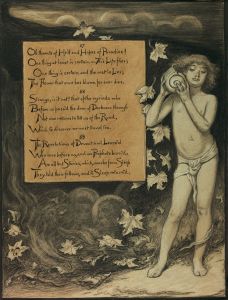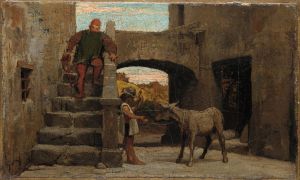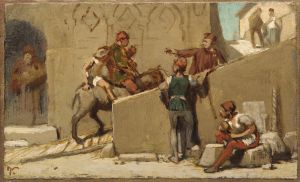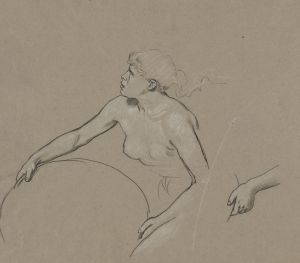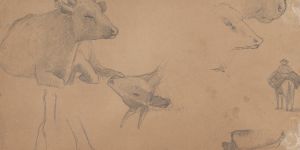
Son and the Donkey
A hand-painted replica of Elihu Vedder’s masterpiece Son and the Donkey, meticulously crafted by professional artists to capture the true essence of the original. Each piece is created with museum-quality canvas and rare mineral pigments, carefully painted by experienced artists with delicate brushstrokes and rich, layered colors to perfectly recreate the texture of the original artwork. Unlike machine-printed reproductions, this hand-painted version brings the painting to life, infused with the artist’s emotions and skill in every stroke. Whether for personal collection or home decoration, it instantly elevates the artistic atmosphere of any space.
Elihu Vedder was an American symbolist painter, known for his imaginative and often mystical works. One of his notable paintings is "Son and the Donkey," which reflects his unique style and thematic interests. Vedder was born in 1836 and spent much of his career in Italy, where he was influenced by the classical art and the vibrant cultural scene of the time. His work often incorporated elements of mythology, literature, and allegory, making him a distinctive figure in the American art scene of the 19th century.
"Son and the Donkey" is a painting that exemplifies Vedder's fascination with allegorical themes. Although specific details about this particular painting are scarce, it is consistent with Vedder's broader body of work, which frequently explored themes of human experience, morality, and the passage of time. Vedder's paintings often featured dreamlike landscapes and figures that seemed to exist in a world between reality and fantasy. His use of symbolism was intended to provoke thought and invite viewers to explore deeper meanings within his art.
Vedder's style was heavily influenced by the Pre-Raphaelite Brotherhood and the Symbolist movement, both of which emphasized detailed, intricate compositions and a focus on conveying emotional and philosophical ideas. His works often featured rich, vibrant colors and a meticulous attention to detail, which helped to create a sense of depth and complexity. This approach is likely reflected in "Son and the Donkey," although specific visual elements of the painting are not widely documented.
Throughout his career, Vedder was known for his versatility and his ability to work across different mediums. In addition to painting, he was also an accomplished illustrator and poet. One of his most famous projects was the illustration of Edward FitzGerald's translation of "The Rubaiyat of Omar Khayyam," which remains a celebrated example of 19th-century book illustration. This project further cemented Vedder's reputation as an artist capable of blending visual art with literary themes.
Vedder's work, including "Son and the Donkey," is characterized by its exploration of universal themes and its ability to resonate with audiences on multiple levels. His paintings often invite viewers to consider the complexities of human nature and the mysteries of existence. While specific information about "Son and the Donkey" is limited, it can be appreciated as part of Vedder's broader artistic legacy, which continues to be studied and admired for its depth and originality.
Elihu Vedder passed away in 1923, leaving behind a body of work that continues to inspire and intrigue art enthusiasts and scholars alike. His contributions to the Symbolist movement and his unique artistic vision have secured his place in the history of American art.







